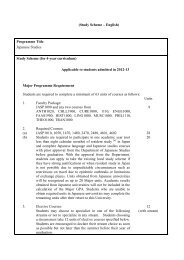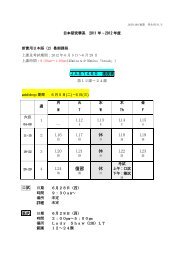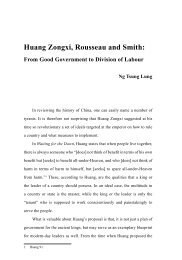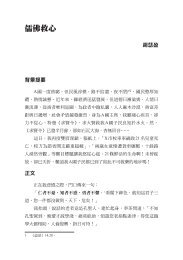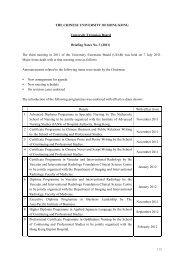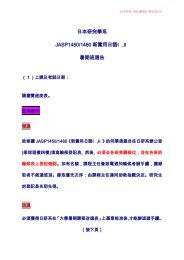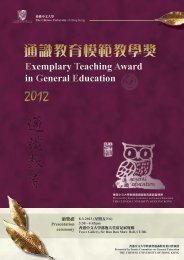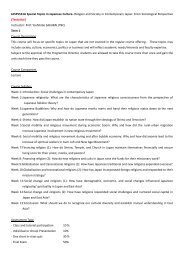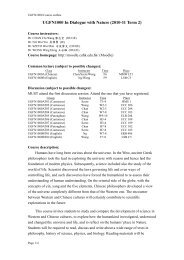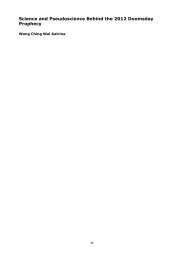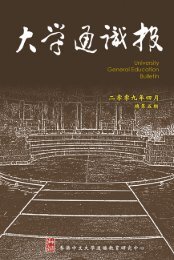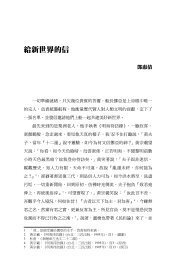ä¸è¼å ¨æ¸ - The Chinese University of Hong Kong
ä¸è¼å ¨æ¸ - The Chinese University of Hong Kong
ä¸è¼å ¨æ¸ - The Chinese University of Hong Kong
Create successful ePaper yourself
Turn your PDF publications into a flip-book with our unique Google optimized e-Paper software.
20 Special Topic: Assessment in <strong>University</strong> General Education Program<br />
service experience back to specific learning goals (Jeavons, 1995). Service<br />
learning has been successfully applied across a wide variety <strong>of</strong> disciplines in<br />
the arts and sciences, as well as in pr<strong>of</strong>essional education programs such as<br />
nursing, law, or pharmacy. <strong>The</strong>re is an extensive literature on this teaching<br />
and learning method, as represented by several specialized publications and<br />
web resources (e.g., Michigan Journal <strong>of</strong> Community Service Learning,<br />
Campus Compact, National Service-Learning Clearinghouse).<br />
Assessment Tasks (ATs) for Affective Learning Outcomes<br />
When designing any AT, it is important to decide what performances<br />
represent evidence that a particular learning outcome has been achieved,<br />
as well as to ensure that there is an alignment between the ILO and the<br />
evidence collected and examined. An example from the psychomotor domain<br />
may help to clarify the importance <strong>of</strong> both defining evidence and aligning<br />
it with the ILO. Imagine that the psychomotor intended learning outcome<br />
for a nursing student is to “collect an uncontaminated blood sample.” <strong>The</strong><br />
evidence that the ILO had been achieved is that the student could produce<br />
an uncontaminated vial <strong>of</strong> blood (as determined by clinical observation <strong>of</strong><br />
the venipuncture technique focusing on the process utilized to collect the<br />
sample). Non-aligned evidence would include performance on a quiz testing<br />
knowledge <strong>of</strong> venipuncture procedures, or even production <strong>of</strong> the vial <strong>of</strong> blood<br />
without clinical observation (as it may have been collected by someone other<br />
than the student). <strong>The</strong> alignment between the ILO and the evidence collected<br />
is obvious in this example. Unfortunately, the identification <strong>of</strong> appropriate<br />
evidence and the alignment <strong>of</strong> that evidence with the ILO is not usually as<br />
clear-cut in the affective learning domain.



